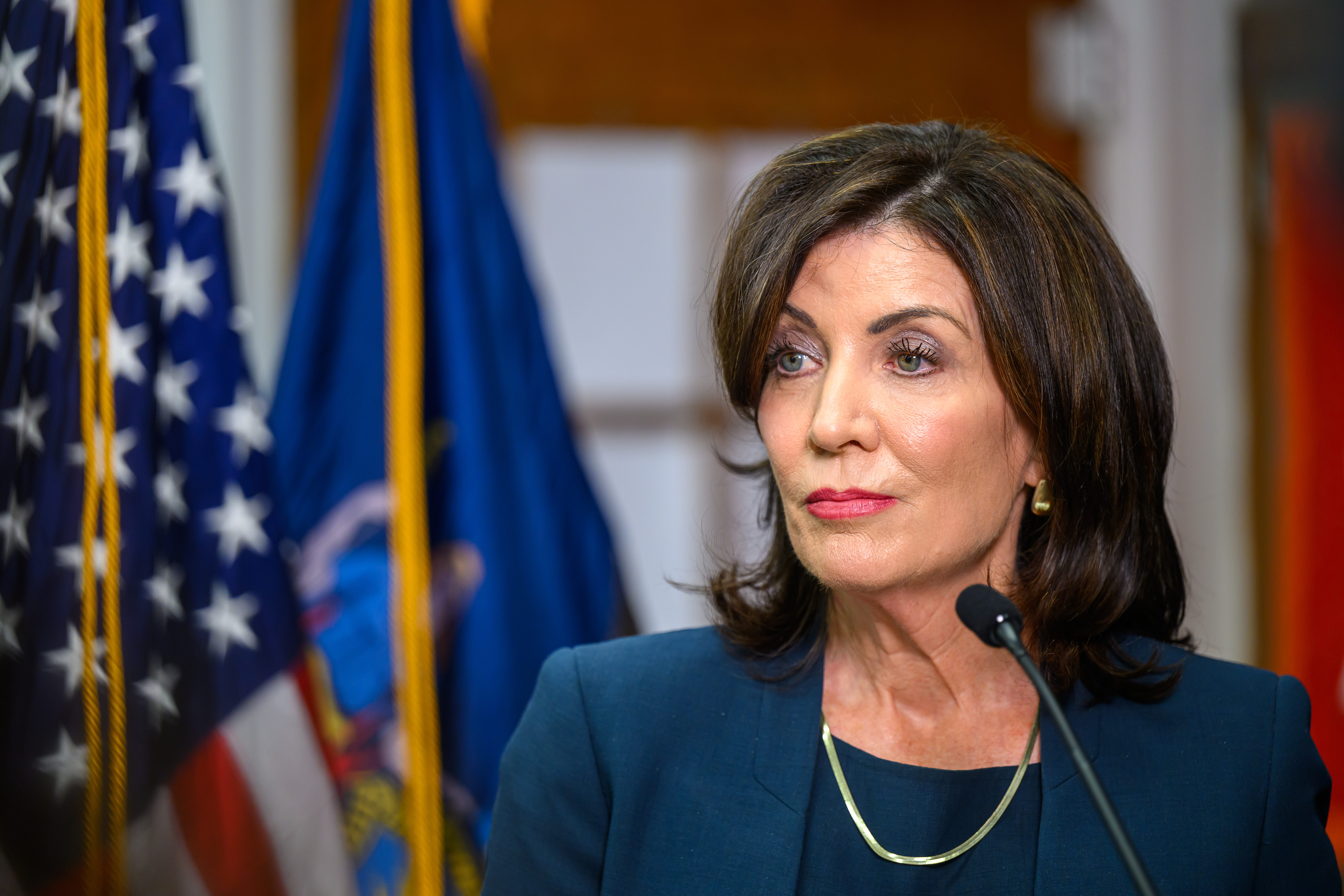“You can do the math. If we don’t lose any incumbent — and I don’t think we will — he’s No. 50. And one step closer to having a majority,” McConnell said of Justice. “I’ve been involved in a lot of recruiting over the years, some successfully, some not. But I think that’s the best recruiting job I ever did.”
After adding a seat to their 50-50 Senate majority under adverse conditions last cycle, Democrats will need a near-perfect performance next year to keep Republicans from regaining control of the chamber. The Senate GOP needs to pick up only one more seat — or none at all, if Republicans win the presidency and claim the vice presidential tie-breaker.
The map is not in Democrats’ favor. There’s almost no chance they hold West Virginia now. That means Sens. Jon Tester (D-Mont.) and Sherrod Brown (D-Ohio) will have to hold the line in difficult territory.
All the while, Republicans released polling showing Manchin faced an uphill battle against Justice and spent early money on ads attacking him for supporting President Joe Biden’s agenda. Justice was in the middle of an interview with a West Virginia newspaper when news broke of Manchin’s retirement, and an aide sent him a text message with a link to the video announcement.
“It wasn’t really a surprise,” Sen. John Fetterman (D-Pa.) said of Manchin’s retirement, adding that his party is still in the battle for the Senate regardless. “I really am very confident about the map.”
Beyond defending Tester, Brown and a slate of purple state senators, Democrats are now under additional pressure to oust Sens. Ted Cruz (R-Texas) and Rick Scott (R-Fla.), difficult pickup opportunities that represent their best shot this cycle. That’s how the party expanded its majority last year — reelecting every incumbent and then adding a seat with Fetterman’s midterm win.
The Democratic Senatorial Campaign Committee is making investments in those states as former Rep. Debbie Mucarsel-Powell of Florida and Rep. Colin Allred of Texas mount uphill challenges to Scott and Cruz. Fetterman praised both Democrats but said “those are two difficult kinds of states for Democrats historically.”
Democrats’ easiest path to keeping the majority is probably to reelect all of their incumbents, who are generally raising eye-popping sums while Republicans focus on electing candidates who can be successful in a general election race after Trump’s endorsements sank the GOP’s hopes last cycle. Montana and Ohio are both redder territory than any of the seats Democrats held last cycle.
“Our incumbents remain very much in solid position to win reelection,” said J.B. Poersch, who runs the Democratic Senate Majority PAC. “They’ve been working hard and running races for almost a year now: thus giving themselves the best chance to win again.“
One bright spot for Democrats: Nasty GOP primaries loom in several key races. To the dismay of GOP leaders, Rep. Matt Rosendale (R-Mont.) is inching toward a second run against Tester after flopping in 2018. He’s already started throwing barbs at Tim Sheehy, a Navy SEAL-turned-wealthy businessman whom Daines personally recruited.
In Ohio, the race against Brown has degenerated into a three-way brawl between a state senator, a businessman and the sitting Ohio secretary of state. The National Republican Senatorial Committee’s preferred candidate, Sam Brown, must win a contested primary in Nevada.
Kari Lake is in the Arizona Senate race, but may face a complicated election against Rep. Ruben Gallego (D-Ariz.) and Sen. Kyrsten Sinema (I-Ariz.), who has not announced whether she’s running. And Republicans don’t have a candidate yet in Wisconsin, either.
Just this week, former GOP Rep. Peter Meijer catapulted into Michigan’s open Senate race, joining another ex-member, Mike Rogers, and a former Detroit police chief in what is shaping up to be another messy melee. The NRSC took the unusual step of dinging Meijer as not “viable” in the race after he ignored their request to sit it out.
Those internecine spats — and the party’s monthslong struggle to deal with the fallout from the defeat of Roe v. Wade — cloud the path forward for the GOP. The party needs to make sure not to blow its primaries if it wants to capitalize on Manchin’s retirement.
“Nothing’s a shoo-in. ... As you can tell by just two days ago,” said Sen. Chuck Grassley (R-Iowa), referring to the poor off-year electoral showing earlier this week.
Still, Republicans are clearly ebullient that Manchin retired. His departure saves them a race against a tough incumbent and makes the primary between Justice and Rep. Alex Mooney (R-W.Va.) far less important; polls had shown Mooney as a weaker general election candidate.
The GOP also has mixed emotions about the conservative Democrat leaving, however. Sen. Dan Sullivan (R-Alaska) said that while it obviously improves the GOP’s chances, Manchin was an ally on energy issues. And Grassley said: “We need more people that will promote bipartisanship and not follow the party line.”
There’s no question Manchin did that. The West Virginia Democrat frustrated Republicans when he frequently supported his party’s agenda after criticizing it. But he didn’t help Democrats gut the filibuster.
“I want to thank Joe because I think he and Kyrsten actually saved the institution. I think that’s the most important thing that’s happened in the last couple years,” McConnell said. “So I think for those who care about the institution, that’s his most important legacy.”
Stiil, a pickup is a pickup. And the goal for both party leaders is getting the majority. Manchin’s exit makes that much more possible — even for Republicans who like the guy personally.
“Hate to see him go as a person. Glad to see him go as a Democrat,” said Sen. Tommy Tuberville (R-Ala.).
Ursula Perano contributed to this report.







.png)
 1 year ago
62
1 year ago
62



 English (US)
English (US)